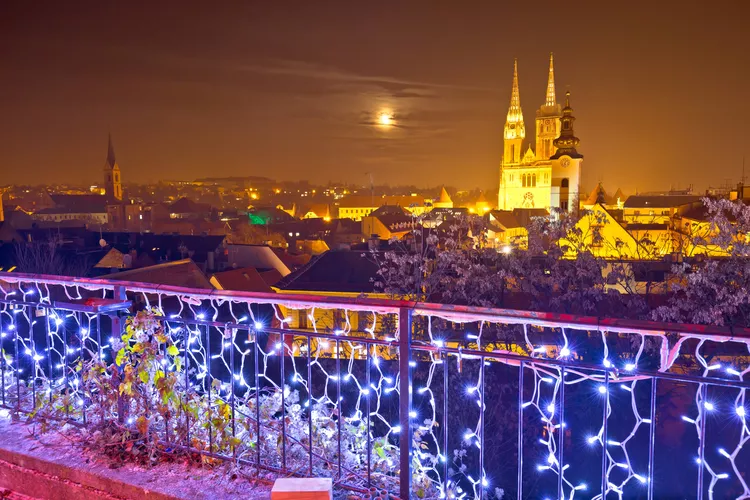Summary
The Catholic heritage in Croatia is never more apparent than during the celebration of Christmas, which, like the United States, falls on December 25. If you are in Croatia’s capital city, pay a visit to the Zagreb Christmas market in the main square. The Dubrovnik Christmas market is another must-see in that Croatian top destination.
Christmas Eve
Christmas Eve, called Badnjak in Croatian, is celebrated similarly to other countries of Eastern Europe. Straw may be placed underneath the Christmas Eve tablecloth. Fish, as a substitute for meat, is served, although a meat dish is usually presented as the entree on Christmas Day. Other traditional dishes include stuffed cabbage, poppyseed rolls, and a cake made from figs. Furthermore, a yule log may be burned after being sprinkled with holy water or spirits, and its fire is tended throughout the night to ensure it does not extinguish from neglect.
On Christmas Eve, the Christmas wheat, which has been sprouting since St. Lucy’s Day on December 13, is tied with ribbon in the colors of the Croatian flag—red, white, and blue. Sometimes, a candle in combination with other symbolic items is placed within the wheat. The wheat may then be placed under the Christmas tree, and its height, density, and overall lushness correlate with the luck the grower can expect in the coming months. The wheat symbolizes the new bread of the sacrament of the Eucharist.
Christmas Day is spent with family or at church. To wish others a “Merry Christmas,” say “Sretan Bozic” in Croatian. The Christmas season concludes with the Feast of the Epiphany on January 6.
Santa Claus and Gift-Giving Traditions
Some Croatians open gifts on Christmas Day, but Croatia also recognizes St. Nicholas Day on December 6. Additionally, gifts are sometimes given on St. Lucy’s Day. The Croatian Santa Claus is often referred to as Djed Mraz, which is the Croatian equivalent to Russia’s Ded Moroz. Djed Božićnjak, who is akin to Grandfather Christmas, or baby Jesus, might also be credited with gift-giving to the children during the holidays. Unlike the tradition of hanging stockings, Croatian children may place their shoes on the windowsill to be filled with treats.
Christmas Decorations in Croatia
In addition to wheat sprouts, Croatians adorn their homes with wreaths and Christmas trees. Licitar hearts—hand-decorated cookies—often embellish Christmas trees in Croatia. Licitars are made from sweet honey dough and are a traditional symbol of Zagreb, often used as ornamental gifts.
Moreover, Christmas creches, or nativity scenes, are also popular decorations in Croatia. Various types of greenery, including evergreen boughs, serve as typical Christmas decor. Straw, brought into homes partly as a remembrance of the original Christmas manger, is steeped in superstition. According to tradition, if a man sits on the straw first, the farm animals will produce female offspring, but if a woman sits on it first, the opposite will occur.
Shopping for Christmas Gifts
If you are looking for Christmas gifts in Croatia, consider local products such as olive oil or wine. Other popular gifts from Croatia include jewelry, embroidery, and licitar hearts, which are available from various vendors offering traditional goods.





